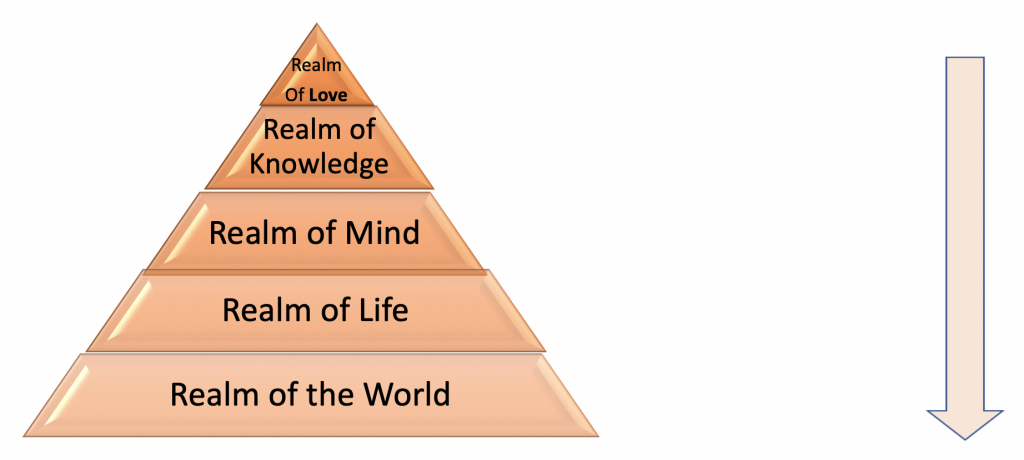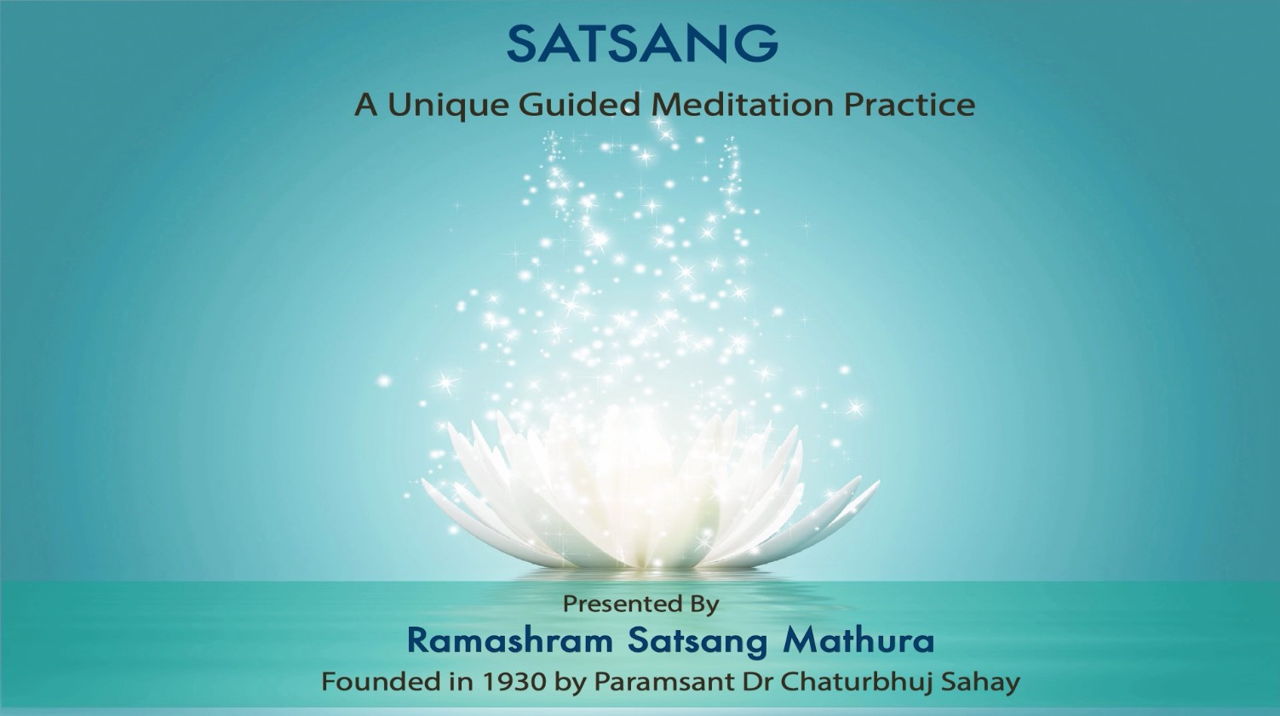Frequently Asked Questions
People who are exploring spirituality or are in pursuit of peace or just want to simplify their lives have questions. In this section we try to answer some of the basic questions based on the philosophical views and principle tenets of Ramashram Satsang Mathura. Some of the answers are actual responses given by Shri Sanjiv Kumar, an engineer by profession and a spiritual scientist by design to some seekers.
Questions covered include:
The need for spirituality
Physical and material well being
Why a Guru?
The benefits of meditation
Personal growth through spiritualism
The Need for Spirituality
1. If I am happy with my existence, do I still need spirituality?
Yes, spirituality talks about the common good, about everlasting peace. Right now,
in this physical state our happiness is dependent upon material possessions and
other external factors. Our perception is that happiness is possible just by achieving
more of physical comfort and physical possessions. But, even a mere thought or
possibility of losing them results into anxiety and makes us unhappy. Our lives are
stressful due to our desires to achieve more of them. Our overall lifestyle in terms of
health or having a calm state of mind, work-life balance, and our ability to be at
peace irrespective of the external environment does not improve. So, we need to
figure out what provides us that, and I think spirituality does.
2. What will I gain through this Satsang?
I would say its internal spiritual strength. We have been trying to achieve peace and
happiness in life through physical possessions and things that are materialistic.
Materialism has not given us everlasting peace. It only increases our desire to get
more and more. While spirituality talks about the common good. How humans can
achieve lasting peace, can coexist better and we would go beyond physical comforts
and physical possessions, talk more about our personal growth by covering all
aspects of our life and not just obliquely focussed on material acquisition. Achieving
spiritual strength and inner strength that will provide us a peaceful coexistence
across nations and communities rather than continuing to fight for the self-centric
individualistic and materialistic approach that we tend to have today.
On Physical & Material Well Being
3. Will I have to shun physical and material comforts?
In the Bhagwad Gita, Lord Krishna taught us how to balance between karma and
dharma. Basically, Spiritualism and this world are not at odds rather they
complement each other. One can continue to achieve progress within this world,
and yet if we stay a little detached from it, we can achieve spiritual progress as well.
We can continue to enjoy the marvels of the material comforts and at the same time
be at peace within.
4. Is detachment necessary?
The Bhagwad Gita talks a lot about detachment and we are losing this concept in this
culture and age. Attachment leads to misery and we go back and forth between
pain and pleasure, state of happiness and sadness and misery, as those ups and
downs of emotions that come through attachment. Buddha said that root cause of
all misery is our attachment to our possessions. Our scriptures have taught us that
detachment is an element which would provide us the ability to live well in the world
as well as continue to progress spiritually by focussing on our rightful Karma or duty.
5. How can one attain detachment?
Indian culture and heritage always had the concept of Guru. The moot question is,
why do we need a Guru? Because, if detachment was so easy that everybody could
implement, they would have been living happily all by themselves. Lots of people
have studied Gita, but how do you implement those concepts in our own lives?
That’s the challenge. So we would have to find someone who has done that and is
aware where all the challenge lies. My grandfather, Guru Maharaj, Dr Chaturbhuj
Sahay Ji, implemented those concepts and practiced them in his own life and then he
shared it with the world. These days I follow the same process that he prescribed
and I try to share that with youngsters and anybody who is interested because I feel
the concepts are great but implementation within one’s life is the most important
piece and fortunately my parents and my uncles who served the mission of Guru
Maharaj were also able to live a life which embodied the concepts that Lord Krishna
gave in Bhagwad Gita.
Need for a Guru
6. Who is a Guru?
Guru is someone who has moved forward towards self-realization and
enlightenment stage and now He is ready to share some of that with us.
7. If a Guru is needed for detachment, how can you find a Guru?
This is a great question. My grandfather Guru Maharaj actually wrote a book on this
topic, ‘Guru Bhakta Sahajo Bai’ by depicting how Sahajo Bai found her Guru and
then what followed. That whole book is on this topic.
Guru Maharaj also addresses the process by which a person who is not adept in
scriptures or who doesn’t have knowledge of the concepts that he wants to learn,
can figure out who is the right Guru. There was something that he quoted,
“गुरु मिला तो जानिए, जब मिटे मोह संताप।“
(Guru Mila to Janiye, Jab Mite Moh Santap)
This means that your quest for a Guru will end when you sit in front of him and
forget about all your miseries and questions. You would feel that all the miseries are
alleviated and a deep sense of peace is percolating inside without much effort.
Because, these days there are lots of people who talk about a lot of things but if they
cannot put one at ease and at peace irrespective of the external circumstances, then
I think there is a problem.
8. How will I know this is the right Guru for me? There are so many Gurus around.
I strongly believe that when you start your quest, the energies of the universe will
come to help you and they will guide you through to destination where you find your
Guru. So the first duty of a seeker is to inculcate that deep quest to get his Guru.
But, Guru Maharaj also said that when you think you have met your Guru you should
not accept Him all at once, rather test him. But, as someone not initiated into the
spiritual process, how can you test a Guru? One of the tests he suggested was that,
“if you sit in front of someone and you forget about your miseries and all those
tensions and anxiety that you have accumulated including the past baggage that you
have on your mind” then you have met your Guru.
Here’s a personal example. I used to visit one of the disciples of Guru Maharaj when
I was in college some 40 years ago. While travelling to meet him I would have so
many questions and would be thinking about so many things. But, the moment I
would sit in front of him, those doubts and queries are all cleared without speaking a
word. As though I am in the land of peace. All those questions would go away and
there was this amazing sense of calmness. It was pure Bliss as we call in Hindi
‘anand’. A deep sense of joy used to pervade inside that uplifts your energies and
enables your senses of being in a different world altogether. I experienced that and I
feel, that is one way to figure out.
By calmness and peace I mean it’s not just for 30 seconds. You go there, you sit there
for an hour or more and you literally forget all the stress, all the issues and situations
that you are dealing with completely, and then I think you are in the right place.
9. How do Gurus help us find peace?
Guru Maharaj said that ‘to be at peace’ is the most inherent and natural thing to
happen for every single person or soul. Spirituality is a very natural phenomenon,
which we have forgotten because of the place where the society is, because of the
current culture, because everybody is running to amass something or the other,
without knowing what and why. And hence, there is no peace. So think about this as
you and I are talking right, we are all thinking about something all the time.
While you are thinking, the mind like a machine emits out thousands and thousands
of thoughts per millisecond. So, how will you find peace when this phenomena is
going on? You will have to stop the barrage of thoughts and go into what is called
the state of yoga. So, how do we stop the barrage of thoughts? Through meditation.
Now, somebody needs to teach us the right way to meditate. There are lots of ways
to meditate. Some are more effective than the others and the person who takes us
through that process is referred to as Guru.
Meditation & Its Benefits
10. What is meditation?


